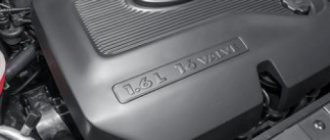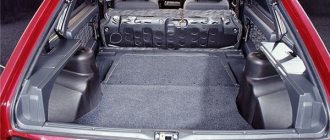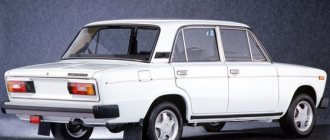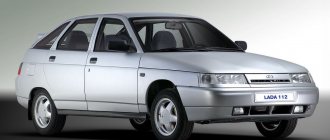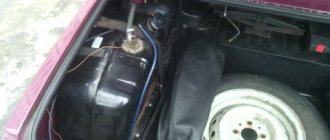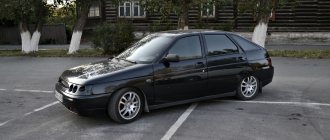Cars with a 1.6-liter HR16DE engine are very common in Russia - the engine is installed on many mass-produced Nissan and Renault models (for the latter it is called H4M), as well as on early Lada Xrays (possibly in the future on Lada Vesta). The rich experience of operating the engine by Russian car enthusiasts allows us to tell a lot about its positive and negative aspects.
Engine production has been established in Japan, China, and since 2014, also in Russia. For the Renault-Nissan alliance, this is one of the largest deals to localize the production of internal combustion engines, which emphasizes its importance for our market. The development was carried out back in 2005 by Nissan together with Renault, to replace the QG16DE (or, according to the Renault classification, K4M). The HR16DE is a smaller analogue of the Nissan MR20DE engine, one of the concern’s most common engines.
For 2022 in Russia, this engine can be found under the hoods of the new Nissan Note, Juke, Terrano, Renault Duster, Logan, Sandero and Sandero Stepway, as well as on the secondary market, in many Nissan Sentra, Micra, Tiida, Qashqai, Cube, Renault Duster , Kaptur, Fluence, Megane and Lada XRay.
Main characteristics
The abbreviation indicates the series (HR), volume (16 = 1.6 liters), number of valves per cylinder - four (D) and multipoint injection through nozzles. The engine uses an aluminum cylinder block (which reduces its weight and improves vehicle warm-up time compared to the K4M's cast iron block), with thin-walled cast iron liners, with a cylinder diameter of 78 mm and a piston stroke of 83.6 mm.
The cylinders are arranged in a row, on the head of each of them there are 4 valves and 2 camshafts (new relative to the K4M, thanks to which friction losses in the engine have been reduced) and four valves. The HR16DE has a timing chain drive of a fairly reliable design; the potential service life of its chain is approximately equal to that of the engine itself, that is, about 200-250 thousand km.
Compared to the K4M, the torque at low and medium speeds has changed, thanks to a change in the valve timing of the intake shaft. Fuel economy indicators have also improved, power has increased slightly (113, 114 and 117 hp at 6,000 rpm) and, just as importantly, the engine has become EURO 5 compliant.
Design flaws
The technical disadvantages of the HR16DE engine, compared to the model it replaced, include the absence of hydraulic compensators - devices that regulate the gaps between valves and camshafts. Accordingly, from time to time (approximately every 90-100 thousand kilometers) it is necessary to adjust the gaps by selecting a pusher.
One of the first signs of an imminent trip to the service center will be a knocking noise under the hood. Based on official sources, the permissible valve clearances on the intake shaft are 0.26-0.34 mm, and on the exhaust shaft - 0.29-0.35 mm. Their adjustment is carried out either by means of new valve stems, or by using washers (with the removal of the valve cover and camshafts).
Typical problems during operation
– Sometimes the engine may not start well at low subzero temperatures (from -20 degrees). The problem can be partially solved by replacing the spark plugs.
- Noise and whistling of the engine. As a rule, they arise due to poor tightening of the alternator belt or, if it has already been done previously, due to the need to replace this part. This is one of the most common complaints from Nissan and Renault owners. The knocking sound, as mentioned above, reminds you that you need to pay attention to adjusting the valve clearances by contacting a service center. Also, noise can arise from burnout of the exhaust pipe ring, which requires replacing the gasket.
– Engine vibrations. Most often, they are a consequence of wear on the mounts supporting the engine - usually the rear one requires replacement first, and then the right one.
– Sudden engine shutdown. May occur due to problems with the ignition unit relay, which was the reason for the recall of a certain batch of Nissan vehicles. Requires installation of a new ignition unit, after which the problem should not recur.
Motor advantages
– Possibility of using AI-92 gasoline, while the engine is officially prescribed AI-95.
– Decent throttle response – excellent performance at low engine speeds.
– The reliability of the unit can also be considered a positive aspect of the engine; extensive experience in operating the engine by Russian car enthusiasts shows quite good results with proper maintenance. To achieve good performance, change the oil every 8-10 thousand km or more often, fill with 5W30 or OW30. The standard service life of such an engine without major overhaul is
— 250 thousand km. mileage with a fairly careful and calm driving style, for which the engine is designed.
Purchasing a contract engine will cost approximately 25-45 thousand rubles on the secondary market, the cost varies depending on the degree of wear, age and integrity of the elements.
The HR16DE engine was designed by representatives of the Nissan-Renault alliance, so it included the developments of K4M from the French side and QG16DE from the Japanese side. The design uses compromise solutions:
- aluminum block and two injectors per cylinder;
- timing chain drive and oil pump;
- DOHC valve timing mechanism and phase regulator on the intake camshaft;
- lack of hydraulic pushers;
- distributed injection and COP ignition circuit with 4 coils without armored wire.
After which, the internal combustion engine is used by the manufacturer of Nissan and Renault cars, and is used in cars from the AvtoVAZ plant in almost the entire line.
Design Features
The HR16DE engine developed by the Renault-Nissan Alliance received the following design features:
- cylinder block - to improve the dynamics of the car, it is made of light alloy, “wet” liners are installed inside;
- injection system - two nozzles per cylinder;
- gas distribution scheme - intake and exhaust camshafts are placed inside the cylinder head, each of them controls 2 valves according to the DOHC scheme;
- cylinder head – height 125 mm, misalignment 0.1 mm maximum;
- phase adjustment - engine modernization consists of using a fluid coupling on the input camshaft, the oil pressure is controlled by an electromagnetic valve;
- Throttle valve – controlled electronically from the ECU.
Since different Nissan models do not use the same ECU firmware versions, it is necessary to study the description of the parameters before using the power drive. But independent boosting and overhauls are possible as needed.
During the release of the HR16DE engine, Nissan management did not use naturally aspirated or turbocharged modifications, since the basic version completely satisfied the developers. If it is necessary to increase power or reduce this characteristic for a specific market, the factory settings are changed, which the user can restore independently by flashing the version of the on-board computer software.
Review of faults and methods for repairing them
When the timing chain links break or jump, the HR16DE motor bends the valve with pistons without counterbores on the end surface. Other malfunctions are usually extraneous sounds:
| Noise inside the timing belt | 1) valve clearances are knocked down 2) wear of the camshaft cams 3) development of valve stems/bushings 4) valve spring is broken 5) reduced oil pressure in the system | 1) adjusting the thermal clearances of the valves 2) replacing the camshaft 3) replacement of valves and bushings 4) installation of a new spring 5) repair or replacement of the oil pump |
| Increased oil consumption | 1) scuff marks on the cylinder bore 2) stuck oil scraper rings | 1) honing cylinders 2) replacing rings |
| Sharp knocking noise at idle when accelerating | 1) wear of connecting rod bearings 2) reduced pressure in the lubrication system | 1) replacement of liners 2) diagnostics, cleaning, oil pump replacement |
| Clunking noise when revving at idle | 1) wear of the main bearings 2) weakening of the flywheel | 1) replacing the liners 2) tightening the fastening bolts |
| Whistling | The alternator belt is loose or overtightened | adjusting tension or replacing the belt |
Repair HR16DE
Manufacturer Nissan has recalled a sold batch of cars due to a defective ignition unit relay. Otherwise, the power drive does not cause any complaints.
Advantages and disadvantages
The main advantages of the HR16DE engine for owners of cars in which it is the power unit can be considered the following:
- environmental friendliness is not lower than Euro-4/5;
- economical consumption of working fluids and fuel;
- the possibility of using gasoline with an octane number of 91 (AI-92);
- actual service life of more than 400,000 km;
- high-resource attachments;
- possibility of independent atmospheric and turbo tuning.
Conditional disadvantages are the loud sound of the chain and the need to adjust the thermal valve clearances after 30,000 km. On the other hand, this dramatically simplifies the design, increases maintainability and reduces the operating budget.
Generations of Nissan Qashqai and engines
Nissan Qashqai was launched into mass production in December 2006 and was equipped with:
- petrol 4-cylinder engines HR16DE (1.6L) and MR20DE (2.0L);
- Renault diesel engines K9K (1.5L), R9M (1.6L) and M9R (2.0L).
In 2010, the model underwent modernization; in 2008, a seven-seat modification of the Qashqai +2 (in the NJ10 body) appeared, which was later replaced by the 3rd generation X-Trail SUV.
Production of the first generation Nissan Qashqai was discontinued in 2013; for Russia, the compact crossover was supplied only with 1.6 and 2.0 liter gasoline engines.
The debut of the second generation Qashqai took place in November 2013, and the range of engines for this car was slightly changed:
- the two-liter M9R engine was removed from the diesel line;
- a 1.2L “turbo-four” appeared in the lineup of gasoline power units;
- instead of the HR16DE engine, a 1.6-liter turbocharged internal combustion engine MR16DDT was installed.
Since 2017, the Qashqai-2 crossover has been produced in a restyled version; the Russian updated model has been assembled near St. Petersburg since March 2022.
But it should be noted that cars from St. Petersburg are equipped only with the R9M diesel engine, 1.2L and 2.0L petrol engines; the MR16DDT engine is not available for Nissan Qashqai-2 cars assembled in the Russian Federation.
List of car models in which it was installed
The HR16DE naturally aspirated in-line engine was developed by the designers of the Renault-Nissan alliance for the following Nissan models:
- Juke – mini-crossover;
- Sentra – export version of the Sunny sedan;
- Qashqai – urban crossover;
- Tiida – sedan and hatchback;
- Note – subcompact van;
- NV200 – LCV-class van and minivan;
- Versa – hatchback and sedan for North America;
- Grand Livina – compact MPV for Malaysia;
- Latio – B-class sedan for Malaysia;
- Bluebird Sylphy – front-wheel drive and all-wheel drive C-class sedan for China and Thailand;
- Cube – subcompact van for Europe;
- Wingroad – utility vehicle;
- Micra is a hatchback made in England.
Maintenance schedule HR16DE 1.6 l/110 l. With.
Taking into account the engine characteristics and operating conditions of the Russian Federation, the manufacturer has developed the following maintenance schedule:
- The service life of the timing chain is from 150,000 km, of attachment drive belts - from 50,000 km;
- the fluid in the cooling system must be replaced after 50,000 km;
- the filter and engine oil should be changed after 10,000 miles;
- the crankcase ventilation should be cleaned after 20,000 km;
- The life of the air filter is limited to 1 year or 20,000 mileage, the fuel filter is 30,000 km;
- spark plugs are designed for 20 - 30 thousand mileage, batteries for about 5 years.
Depending on the conditions under which the HR16DE engine is operated, the exhaust manifold begins to burn out after 40 - 70 thousand mileage.
Engine tuning options
If you make any changes to the HR16DE engine mechanically, you will need to reinstall the on-board computer software version. Regular chip tuning can add about 5% power, but by itself does not solve problems.
Atmospheric tuning includes the following operations:
- reducing back pressure inside the exhaust tract - direct-flow exhaust with a cross-section of 61 mm, a spider instead of an exhaust manifold, dismantling oxygen sensors, installing one or two resonators in series;
- increasing the intake air volumes - a separate throttle for each cylinder or a zero-resistance filter with grinding of the intake manifold channels;
- modification of the cylinder head and timing belt - grinding the head, installing wide-phase camshafts.
Supercharged tuning can increase power to 160 hp. pp., but the pressure should be limited to 0.5 bar. When installing a turbine, high-performance injectors, modifications to the exhaust tract, and pistons with recesses will be required to reduce the compression ratio.
Thus, the HR16DE engine developed by the Renault-Nissan Alliance has the additional marking H4M, the combustion chamber volume is 1.6 liters and the power is 110 hp. With. The engine is considered a reliable, economical and lubrication/fuel-friendly power drive for SUVs.
Home page » Selecting oil by car brand » Oil for Nissan engines of different models
Characteristics
| Production | Yokohama Plant Dongfeng Motor Company AvtoVAZ |
| Engine make | HR16DE H4M |
| Years of manufacture | 2006-present |
| Cylinder block material | aluminum |
| Supply system | injector |
| Type | in-line |
| Number of cylinders | 4 |
| Valves per cylinder | 4 |
| Piston stroke, mm | 83.6 |
| Cylinder diameter, mm | 78 |
| Compression ratio | 10.7 |
| Engine capacity, cc | 1598 |
| Engine power, hp/rpm | 108/5600 114/6000 117/6000 |
| Torque, Nm/rpm | 142/4000 156/4400 158/4000 |
| Fuel | 95 |
| Environmental standards | Euro 4 Euro 5 |
| Engine weight, kg | n.d. |
| Fuel consumption, l/100 km (Sentra) - city - highway - mixed. | 8.9 5.5 6.4 |
| Oil consumption, g/1000 km | up to 500 |
| Engine oil | 0W-30 0W-40 5W-30 5W-40 10W-30 10W-40 10W-60 15W-40 |
| How much oil is in the engine | 4.3 |
| Oil change carried out, km | 15000 (better 7500) |
| Engine operating temperature, degrees. | n.d. |
| Engine life, thousand km - according to the plant - in practice | n.d. 250+ |
| Tuning - potential - without loss of resource | 150+ ~125 |
| The engine was installed | Nissan Note Nissan Tiida Nissan QashqaiNissan Sentra Nissan Terrano Nissan JukeLada X-RayLada Vesta Renault Arkana Renault Logan Renault Kaptur Nissan Micra Nissan Wingroad Nissan Cube Nissan Bluebird Sylphy Nissan Latio Nissan Grand Livina Nissan Versa Nissan NV200 |
Oil for Nissan engines of different models
Many car enthusiasts are wondering about choosing the most effective lubricants for Nissan cars. To make an informed choice, it is necessary to study the main characteristics of the vehicle and the conditions of use: type of power unit, mileage, climate.
As additional information, you can familiarize yourself with the tolerance specified for a particular car model. Such information is written in the service manual or can be found on the Internet. The most significant are ACEA and SAE approvals. As for the second, it indicates the viscosity class.
Alternative replacement for original Nissan oils
The use of original Nissan products is not at all a prerequisite; other lubricants that match the characteristics can be used.
To ensure that the engine runs for a long time and smoothly, it is advisable to choose synthetic types of oils; the following brands have received good reviews:
- Helix Ultra 5W40 from the Shell brand;
- Molygen New Generation 5W40 (Liqui Moly);
- 8100 Eco-clean 5W30 (Motul);
- Special Tec LL 5W30 (Liqui Moly);
- Magnatec 5W30 AP (Castrol).
There are still many other options, especially since auto chemical manufacturers do not stand still, new developments of motor oils appear regularly.
Here it is important not to run into a fake, and you also need to know that modern synthetic oils are divided into two categories - PAO synthetics and HC synthetics.
Pennzoil Synthetics is produced by synthesis from natural gas, while HC-Synthetics uses crude oil as a feedstock.
PAO synthetics provide more reliable engine protection at high and low temperatures and have better performance characteristics, although they are more expensive.
Selection by viscosity grade
Every experienced motorist is familiar with indicators such as 5w30, 10w40 and so on. These numbers indicate the temperature index of use of the motor fluid. The most popular markings in the domestic space are: SAE 0w-20°/+35°C.
For countries with cold climates, oils with SAE 5w30 ratings with temperatures from -30° to +35° are most often used. In temperate zones, it is best to fill with SAE 5w fluid at the same temperature. No less relevant is a lubricant with the characteristics of 5w40.
ACEA approval should not be ignored either. This indicator demonstrates compatibility with internal combustion engines. Passenger cars Nissan Qashqai, Primera, Almera, X-Trail, Tiida, Teana, Postfinder, Murano with left-hand drive work perfectly on lubricant with A3/B4 ratings.
These are standard types from the manufacturer Nissan, marked 5w40. If it is not possible to use original products, experienced specialists recommend using oils from the company:
First of all, you should pay attention to tolerances, the company’s reputation and the final cost. However, if we talk about the price aspect, then for Nissan 5w40 oil you will have to pay around 2000-2300 rubles for a 5 liter canister. This is significantly cheaper than foreign analogues.
Selection of oil for Nissan models
Oil for Nissan Primera with gasoline engines GA16DS, SR20DI, SR20DE
For all types of power units with the specified parameters, the use of the following lubricants is recommended:
- branded lubricants from the vehicle manufacturer;
- liquids type SG, SF according to API classification;
- The viscosity class is selected according to climatic conditions and engine parameters.
If we are talking about the approximate volume of the product used, then for replacement you will need:
- SR20DI – 3.2 and 3.4 liters, respectively;
- GA16DS – 2.8 and 3.2 liters.
The choice of viscosity class is made according to temperature conditions:
- range from -25°C -10°C – 5w20;
- from -25°C+15°C – 5w30;
- from -20°C+40°C – 10w30.
It is best to use products with a viscosity grade of 10w30 in areas where temperatures exceed 20°C. For hot climates, oils with a viscosity of 20w50, 20w40 are used.
Qashqai
As for the use of lubricants for the Nissan Qashqai engine, special attention should be paid to the manufacturer’s recommendations. Therefore, it is best to fill car power units with synthetic-based substances with a viscosity class of 5w40.
Since the Qashqai 2.0 internal combustion engine system holds 4.5 liters, it is necessary to purchase 5-liter cans with original oil.
Nissan X-Trail
According to the performance characteristics of gasoline engines QR20DE, QR25DE, original fluids from Nissan should be used for them:
- according to the API system with classes SH, SG, in some cases SJ are used;
- according to the ACEA 98B1 system;
- according to ILSAC classification type GF1.
For temperatures from -30°C, 10w30 lubricants are used. For areas with hot climates, it is necessary to use products with a viscosity of 20w40.
A dry Nissan X-Trail engine will require about 4.5 liters of oil. With the base liquid it will take about 3.5 liters.
Nissan Beetle
HR16DE power units running on gasoline need to be filled with lubricant with the characteristics and requirements:
- original products from the car manufacturer or a foreign analogue;
- high quality according to the SL, SM - API system;
- ACEA compliance;
- quality standards ILSAC GF4, GF3;
- viscosity class according to climatic conditions.
For diesel-powered Nissan Juke power units, the following fluid is used:
- from a car manufacturer;
- ACEA system class – C4;
- according to the SAE classification, the oil viscosity should be 5w30;
- low-ash mixtures "Low SAPS".
Any replacement of a lubricant with diesel fuel will not do without 4.4 liters, and taking into account the oil filter 4.24 liters.
Nissan Teana
According to the performance characteristics of the car, the manufacturer recommends using branded oil. The manual instructions describe the parameters: viscosity, class, type and features of use.
After a thorough study of the parameters, you can begin choosing a motor lubricant, taking into account:
1). Season when the liquid can be applied. Experts do not recommend pouring separate products for summer or winter. It is better to use off-season oils, since they can be used both in winter and summer. However, any type of mixture used has its own characteristics, additives and flow rates;
2). The basic basis of the substance taken. It is not recommended to use mineral fluids on Nissan Teana units. Uninterrupted operation is ensured only thanks to synthetic and semi-artificial lubricants;
3). The presence of special markings on the oil canister, demonstrating certain characteristics and properties for a particular type of engine.
Teana L33 2014 release
According to the performance characteristics of the car, experts recommend using QR25DE for units:
- original mixture from Nissan;
- quality standard SM, SN, SL according to API;
- quality level from ILSAC – GF5, GF4, GF3.
As for the filling volume of the lubricant on VQ, QR power units, it is 4.3 liters, and taking into account the filter, 4.6 liters.
Nissan Tiida 2004-2014 release
According to the prescribed instructions for Nissan Tiida models with MR18DE, HR16DE engines, it is necessary to use special types of fluid:
- branded lubricants from Nissan or similar oils from foreign manufacturers;
- ACEA quality – class A1B1, C2C3;
- ILSAC standards – lubricant GF4, GF3;
- API standards – types SM, SL.
The viscosity level is selected according to climatic conditions.
Nissan Almera
Manufacturers recommend using Nissan brand oil with a viscosity level of 5w30 or 5w40. These indicators correspond to synthetic-based products for off-season use. The filling capacity is 4 liters.
You can also use foreign analogues:
- Total Future 5w30;
- Mobil 5w40;
- Petro-Canada 5w30.
Any use of oil for a Nissan car must be considered and tested. You should not purchase lubricant products that do not meet the parameters of the internal combustion engine system, as this can lead to wear and complete deformation of the engine.
| Oil consumption | maximum 0.5 l/1000 km | |
| What kind of oil to pour into the engine by viscosity | 5W30, 5W40, 0W30, 0W40 | |
| Which engine oil is best by manufacturer | Liqui Moly, Mobil, Shell, Motul | |
| Oil for HR16DE by composition | synthetics, semi-synthetics | |
| Engine oil volume | 4.3 l | |
| Operating temperature | 95° | |
| ICE resource | stated 250,000 km | |
| Adjustment of valves | washers | |
| Cooling system | forced, antifreeze | |
| Coolant volume | 6.3 l | |
| water pump | GKN-Spidan 91637, Febi 37195, Dolz N151, Blue Print ADN19190 | |
| Spark plugs for HR16DE | PLZKAR6A-11 from NGK | |
| Spark plug gap | 0,7 | |
| Valve train chain | 130281KC0A with two colored marks | |
| Cylinder operating order | 1-3-4-2 | |
| Air filter | Champion CAF100956P, Bosch F026400101, Blue Print ADN12249, Alco MD-8288 | |
| Oil filter | C-207L, C-224, C-221 VIC | |
| Flywheel | 6 bolt holes, ring gear complete | |
| Flywheel mounting bolts | M12x1.25 mm | |
| Valve stem seals | manufacturer Goetze | |
| Compression | from 12 bar, difference maximum 1 bar in adjacent cylinders | |
| XX speed | 750 – 800 min-1 | |
| Tightening force of threaded connections | spark plug – 16 Nm | |
| 1) adjusting the thermal clearances of the valves | ||
| Increased oil consumption | 1) scuff marks on the cylinder bore | |
| 1) cylinder honing | ||
| Sharp knocking noise at idle when accelerating | 1) wear of connecting rod bearings | |
| 1) replacement of liners | ||
| Clunking noise when revving at idle | 1) wear of main bearings | |
| 1) replacement of liners | ||
| Whistling | The alternator belt is loose or overtightened | adjusting tension or replacing the belt |
Engine oil for 1.6 liter diesel engine
The 1.6 dCi diesel engine (model R9M) is a four-cylinder turbocharged power unit with a maximum power of 130 hp. pp., in the Russian version it is installed on the second generation Nissan Qashqai (pre-styling).
The R9M diesel engine has been produced since 2011 and is considered a fairly reliable power unit; its main drawback is poor starting in frosty weather.
The lubricants recommended here by the manufacturer are original low-ash low SAPS oils with specification ACEA C4 (Renault RN 0720), specially designed for engines with particulate filters and turbocharging.
The standard viscosity for this engine is MM SAE 5W30; for northern regions in winter it is advisable to use 0W grades.
In addition to original Nissan products, you can also fill the 1.6 dCi engine with 5W30 oil:
- Top Tec 4400 (Liqui Moly);
- Helix Ultra AR-L (Shell);
- Specific 0720 (Motul);
- Profile R-XL (Motorex);
- Evolution Full-Tech FE (Elf);
- Syntium 5000 RN (Petronas);
- Formula RNX (Gulf);
- City Pro C4 (Neste);
- Officialtech C4 (Wolf).
There is an opinion that Wolf oil is consumed during operation and has to be topped up. But this statement is not necessarily true, since oil consumption is affected by all kinds of leaks, worn out caps and piston rings, and increased engine load.




